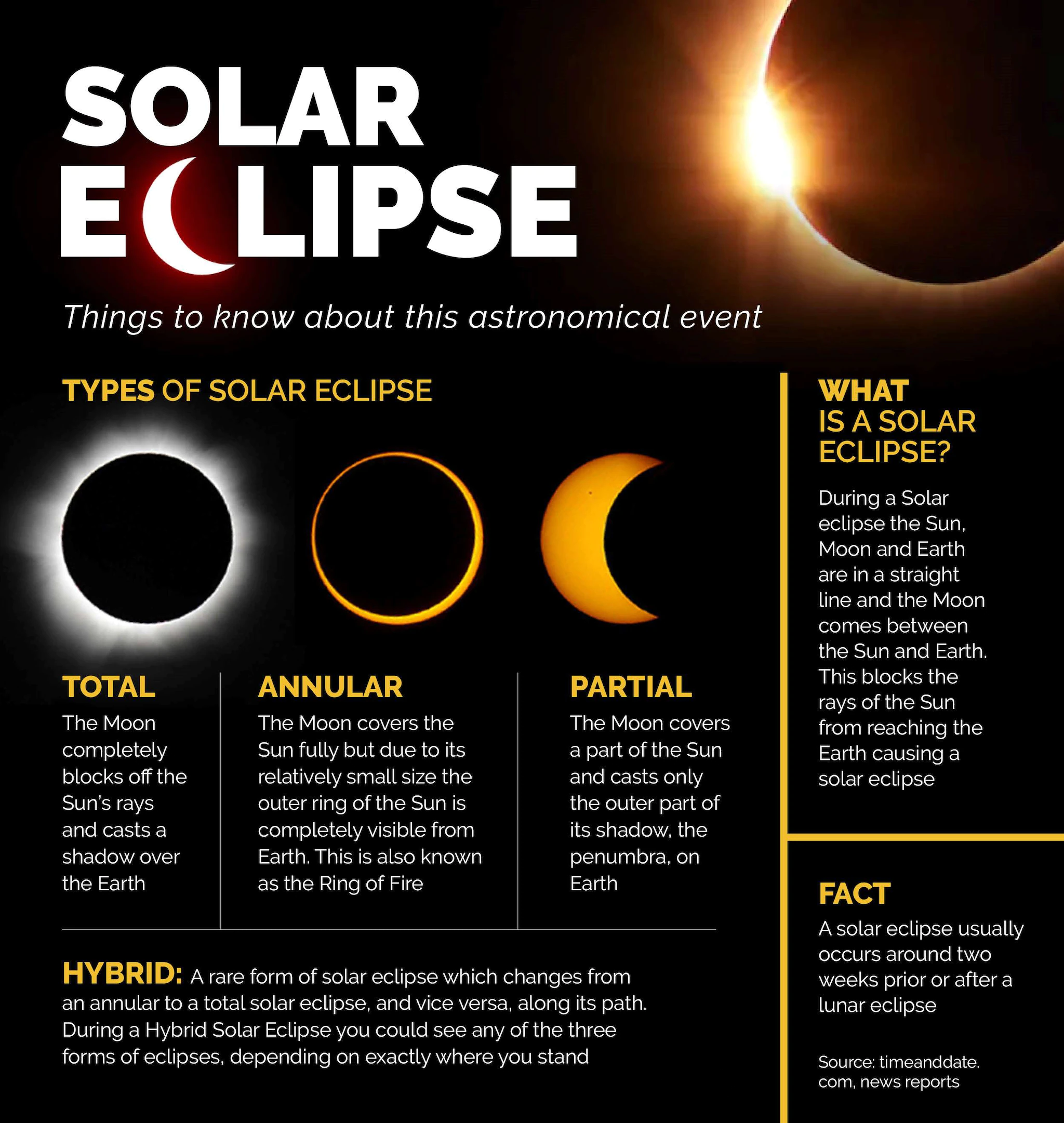Important Facts For Prelims
Ningaloo Eclipse
- 21 Apr 2023
- 3 min read
Why in News?
The Ningaloo Eclipse was witnessed on April 20, 2023. It is a rare ‘hybrid solar eclipse’ , caused by the curvature of the earth's surface and a shift from annular to total eclipse.
- The last one was seen in 2013, and the next one will appear in 2031.
What are the Major Points Related to Hybrid Solar Eclipse?
- A total solar eclipse was visible in Australia, Timor-Leste and Indonesia (West Papua and Papua).
- At the same time, a partial solar eclipse was visible in southeast Asia, East Indies, Australia, Philippines and New Zealand. It was not visible in India.
- Its uniqueness is such that it has already been named as Ningaloo, a part of western Australia from which the eclipse was most visible.
- The Ningaloo region is also designated as a UNESCO World Heritage Site.
What is a Solar Eclipse?
- About:
- A solar eclipse is a natural phenomenon that occurs when the Moon passes between the Sun and the Earth, casting a shadow on the Earth's surface, resulting in a temporary darkening of the Sun.
- The moon's shadow has two parts: a central region (umbra) and an outer region (penumbra).
- A solar eclipse is a natural phenomenon that occurs when the Moon passes between the Sun and the Earth, casting a shadow on the Earth's surface, resulting in a temporary darkening of the Sun.
- Types of Solar Eclipse:
- Total Solar Eclipse: A total eclipse happens when the Moon completely blocks out the Sun while passing between the Earth and the Sun.
- The Baily's Beads effect, also known as the diamond ring effect, is a phenomenon that occurs during a total solar eclipse or annular solar eclipse.
- Annular Eclipse: It happens when the Moon is at its farthest point from the Earth.
- The sun is covered in such a way that only a small ring-like sliver of light is seen from the sun's disc. This ring is known as the ring of fire.
- Partial Eclipse: It occurs when the Moon passes between the Earth and the Sun but is not perfectly aligned.
- Hence, only a part of the Sun appears covered.
- Hybrid Eclipse: A hybrid solar eclipse occurs when the eclipse is total from some locations on Earth and annular from others, due to the viewer's position relative to the Moon's shadow.
- It means that for some observers, the Moon appears to fully cover the Sun, resulting in a total solar eclipse, while for others, the Moon only partially covers the Sun, resulting in an annular solar eclipse.
- Total Solar Eclipse: A total eclipse happens when the Moon completely blocks out the Sun while passing between the Earth and the Sun.





